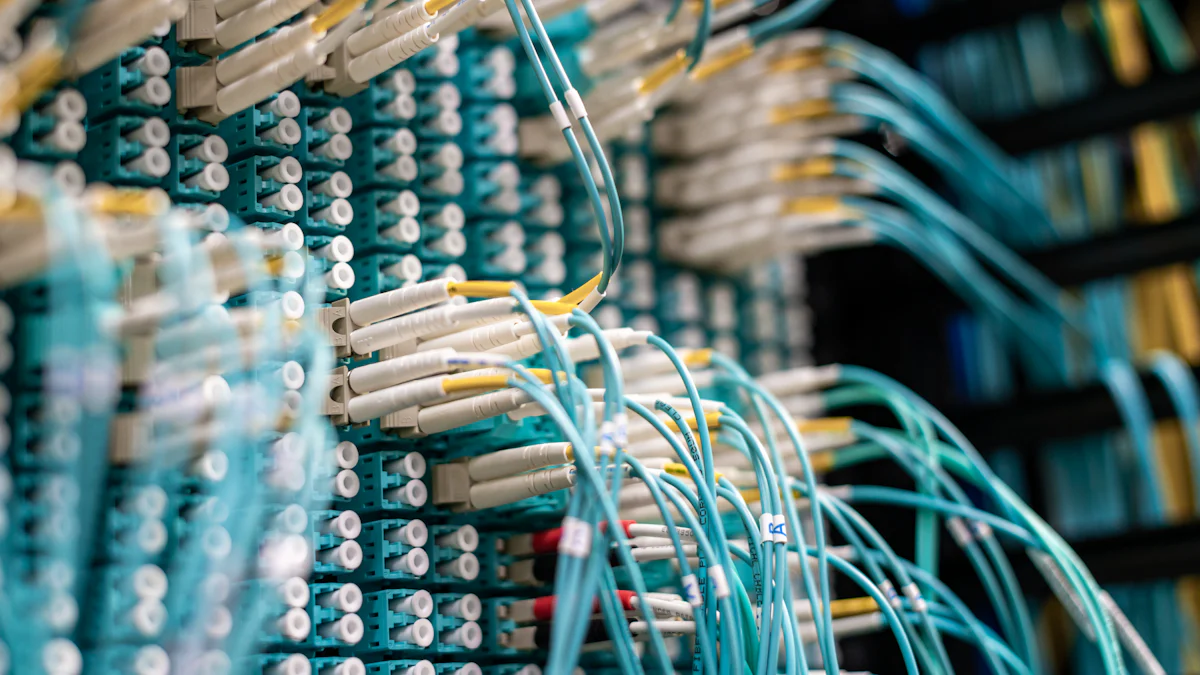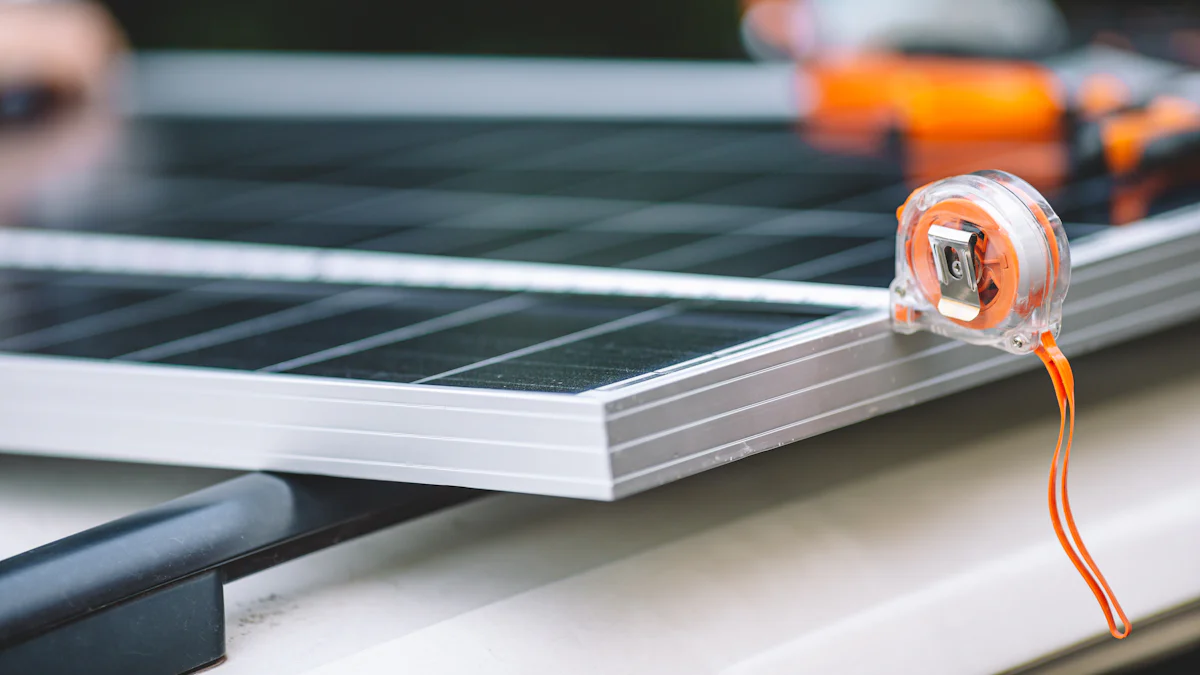Choosing the Best Photovoltaic Cable for Your Solar Panel Installation
Why Choosing the Right Photovoltaic Cable Matters
When it comes to setting up a solar installation, the choice of photovoltaic cable plays a critical role in ensuring efficiency and safety. The role of these cables is multifaceted, with their primary function being to facilitate the seamless flow of electricity from the solar panels to the inverter. This process is essential for harnessing the maximum energy output from the panels and transmitting it for further use. Additionally, selecting the appropriate photovoltaic cable is vital for maintaining compliance with industry standards, safety regulations, and electrical codes.
In my personal encounter with cable selection, I realized that opting for high-quality photovoltaic cables significantly reduced power losses within the system. This not only enhanced the overall performance but also contributed to long-term cost-effectiveness. Moreover, understanding the specific requirements of the electrical system is crucial. Factors such as current-carrying capacity, voltage ratings, environmental conditions, and installation considerations must be taken into account to ensure that the selected cable meets the demands of the system effectively.
One of the common pitfalls to avoid when choosing photovoltaic cables is overlooking their significance in reducing power losses and ensuring compliance with industry standards. It's important to recognize that normal cables may have a lower upfront cost compared to PV cables; however, they may not provide adequate protection against electrical hazards and environmental factors. Therefore, prioritizing quality over initial cost can lead to long-term benefits in terms of efficiency and safety.
Understanding Photovoltaic Cables
Types of Photovoltaic Cables
When it comes to photovoltaic cables, there are different types available, each with its own unique characteristics and applications. One common consideration is the choice between solar cable 4mm and 6mm PV cable. The main difference lies in their thickness and current-carrying capacity. Solar cable 4mm is suitable for smaller solar systems, offering a balance between cost-effectiveness and performance. On the other hand, 6mm PV cable is ideal for small to medium-sized solar panels, providing extra coverage for safety and efficiency.
The significance of cable thickness cannot be overstated when it comes to photovoltaic installations. Thicker cables such as the 6mm PV cable offer lower electrical resistance, enabling them to carry higher currents with minimal power loss. This is particularly important in solar setups where maximizing energy transmission from the panels to the inverter is crucial for overall system performance.
Key Features of Quality Photovoltaic Cables
Quality photovoltaic cables exhibit specific features that make them well-suited for solar installations. Durability and weather resistance are paramount in ensuring the longevity and reliability of these cables. Unlike normal cables, photovoltaic cables are designed to withstand harsh weather conditions, extreme temperatures, and UV radiation. Their insulation materials offer excellent resistance to sunlight, making them ideal for outdoor use in solar power systems.
Another key feature of quality photovoltaic cables is their conductivity and performance. These cables are engineered to maintain high levels of conductivity over long distances, ensuring efficient energy transmission within the solar setup. Additionally, they are designed to perform well in hot temperatures while maintaining flexibility and resilience.
Selecting the Perfect Cable for Your Solar Setup
When it comes to selecting the perfect photovoltaic cable for your solar setup, several crucial considerations come into play. From assessing your solar system's size to ensuring compatibility with solar components, each step is essential in determining the most suitable cable for your specific requirements.
Calculating Your Needs: Solar Cable 4mm or 6mm PV Cable?
Assessing Your Solar System's Size
To begin the selection process, it's vital to assess the size of your solar system. This includes evaluating the maximum power output of your solar panels and understanding the expected load on the system. By considering these factors, you can determine the specific current requirements of your solar power system. This assessment is crucial in deciding whether a solar cable 4mm or a 6mm PV cable would be more suitable for efficient power transmission within your setup.
Considering Future Expansions
Another important aspect to consider is future expansions. If you anticipate expanding your solar installation in the future, it's prudent to select a photovoltaic cable that can accommodate potential increases in capacity. This forward-looking approach ensures that your cable choice aligns with your long-term plans for system expansion, avoiding the need for premature upgrades or replacements.
Matching Cables with Solar Components
Compatibility with Solar Panels and Inverters
The compatibility of photovoltaic cables with solar panels and inverters is paramount in achieving optimal performance. These cables are specifically designed to meet the unique electrical demands of solar power systems, ensuring seamless integration with other components. When selecting a cable, it's essential to verify its compatibility with both the solar panels and inverters to guarantee efficient energy transmission and overall system functionality.
Understanding Amp Ratings
A critical factor in selecting the perfect photovoltaic cable is understanding amp ratings. By taking into account aspects such as current capacity, cable length, voltage drop, temperature, and environmental factors, you can determine the appropriate size and gauge of PV cable for your solar system. This meticulous consideration ensures efficient power transmission while minimizing energy losses within the system.
Installation Tips and Best Practices

Now that you've selected the ideal photovoltaic cable for your solar setup, it's crucial to focus on safe installation practices and effective maintenance to ensure the long-term performance of your solar power system. By adhering to best practices and conducting regular checks, you can maximize the efficiency and safety of your photovoltaic installation.
Safe Installation Practices
When it comes to installing photovoltaic cables, prioritizing safety is paramount. Avoiding common mistakes during the installation process is essential for preventing potential hazards and ensuring the seamless operation of your solar power system. Additionally, having the right tools and equipment at your disposal is crucial for a smooth and efficient installation process.
Avoiding Common Mistakes
Incorporating safe installation practices involves steering clear of common mistakes that could compromise the integrity of your solar setup. These errors may include improper cable routing, inadequate insulation protection, or overlooking grounding requirements. By being mindful of these potential pitfalls, you can safeguard your system against electrical faults and performance issues.
Tools and Equipment Needed
To facilitate a safe and efficient installation, specific tools and equipment are required to handle photovoltaic cables effectively. These may include cable cutters, wire strippers, crimping tools, cable ties, conduit fittings, and appropriate personal protective equipment (PPE) such as gloves and safety glasses. Utilizing these tools in accordance with industry best practices ensures precision and compliance throughout the installation process.
Maintaining Your Solar Cables
Regular checks and upkeep are essential components of maintaining the integrity and performance of your photovoltaic cables. By implementing proactive maintenance measures, you can identify potential issues early on and address them promptly to prevent any disruptions in energy transmission.
Regular Checks and Upkeep
Conducting routine inspections of your photovoltaic cables allows you to monitor their condition over time. This includes visually examining the cables for signs of wear, damage, or degradation caused by environmental factors. Additionally, checking connections, terminations, and junction boxes ensures that all components remain secure and functional within the solar power system.
When to Seek Professional Help
While regular maintenance tasks can be performed by conscientious homeowners or installers with technical expertise, there are instances where professional assistance may be necessary. If you encounter complex electrical issues or if maintenance tasks require specialized knowledge or equipment beyond your capabilities, seeking professional help from certified electricians or solar technicians is advisable.
By adhering to safe installation practices and implementing regular maintenance routines for your photovoltaic cables, you can uphold the efficiency, reliability, and safety of your solar power system for years to come.
Wrapping Up
Recap of Key Points
In conclusion, the selection of the appropriate photovoltaic cable is a critical determinant of the safe and reliable transmission of solar power within a photovoltaic system. Compliance with industry standards, material quality, proper sizing, voltage and current ratings, temperature tolerance, flexibility, bend radius, warranty coverage, manufacturer reputation, and affordability are all pivotal considerations when choosing the best PV cable for a solar installation.
When deciding between PV cables and normal cables, it's essential to evaluate system requirements comprehensively. Additionally, considering long-term costs and seeking professional advice can aid in making an informed decision that aligns with both immediate needs and future plans for the solar setup.
Properly sizing the cables and selecting the right type of wire is crucial to prevent overheating, reduce energy loss, and ensure the safety, reliability, and efficiency of the PV system. Thicker cables such as 6mm PV cables offer lower electrical resistance and are well-suited for small to medium-sized solar panels due to their enhanced capacity for carrying higher currents with minimal power loss.
Durability and outdoor performance are paramount considerations when selecting cables for solar applications. Unlike normal cables, photovoltaic cables are crafted with materials designed to withstand outdoor conditions while maintaining high levels of conductivity over long distances.
Encouragement to Choose Wisely and Act Safely
As you embark on your journey towards setting up a solar power system or upgrading an existing one, I encourage you to approach the selection of photovoltaic cables thoughtfully. By prioritizing safety compliance, performance efficiency, and long-term reliability in your cable selection process, you can lay a solid foundation for harnessing clean energy from the sun.
Remember that every aspect of your solar installation contributes to its overall functionality and safety. Therefore, taking proactive measures in choosing high-quality photovoltaic cables, adhering to safe installation practices, conducting regular maintenance checks will not only optimize your system's performance but also contribute to a sustainable energy future.
In closing, I wish you success in your solar endeavors as you make informed decisions about selecting the best photovoltaic cable for your unique requirements. Here's to harnessing the power of sunlight responsibly and sustainably!












